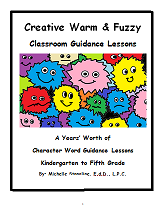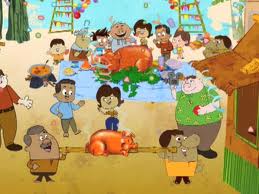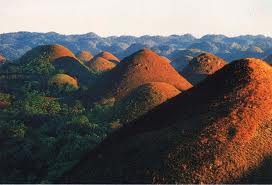Sandtray Therapy Class-Multicultural Miniatures-Student #11
(Sand Tray Therapy Student)
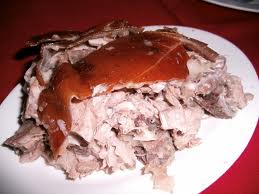
Sandtray Therapy Class-Multicultural Miniatures-Student #11
I chose the Filipino culture for my sand tray therapy miniature multicultural project. I selected this culture because I have Filipino ancestry on my dad’s side of the family. My great-grandfather was from the Philippines, the island of Cebu. My family has limited knowledge of our family because my great-grandparents died when my grandfather was a child. My great grandfather, Paulino Taubodo, immigrated to the United States in 1889. My great-grandfather met my great grandmother in Florida; they got married, and had four children-my grandfather was the youngest. My dad’s side of the family is very private and guarded about family information so we there is a lot we do not know. My family recently discovered through Ancestry.com that it appears as if my great-grandfather changed the original spelling of our last name which can explain why we have been unable to locate any other Taubodos worldwide outside of those we know of in the United States. Several family members have planned on traveling to the Philippines to gain more information about our family heritage but we have also accepted that we may not find any more information about our family. My family has taken time to educate ourselves about the Filipino culture through attending festivals, learning information through other Filipinos, and other means such as through friends/acquaintances, books, movies, etc . I am grateful for the information and exposure to Filipino culture gained from growing up in San Jose California that has a large Filipino population.
The Philippines is made of up 7,107 islands. There are more than 60 cultural minority groups that exist. There 80-100 cultural languages spoken and Tagalog is the national language which is only spoken by about a third of the population (Sanchez and Gaw, 2007). Many Filipinos speak Taglish which is a combination of Tagalog and English. Colonization by Spain in the 1500’s introduced Catholicism and Spanish culture which sought to replace Filipino indigenous culture and cultural beliefs (David, 2010).
Filipino Americans are the second fastest growing Asian American group in the United States. It is estimated that almost 3 million Filipinos live in the United States with some of the highest populations residing in California and Hawaii. Filipinos immigrated to the United States as early as the 1700’s in Louisiana but most Filipino Americans immigrated after 1965 (Alvarez and Juang, 2010)The history of Filipinos is complex in part that Filipino Americans are the only Asian American ethnic group that directly experienced colonization by the United States (David and Okazaki, 2006). Filipinos held status of United States nationals until 1938 and the Philippines was a United States commonwealth until 1946 (David and Okazaki, 2006). Filipinos historically experienced Spanish and American colonization which has an impacted their identity in a great way. The United States occupation further introduced English, American school educational system, and American lifestyle and culture (David, 2010). Even though Filipinos are the second fastest growing group, they are often invisible in that they are often mistaken for Hispanic/Latino due their Spanish surnames. Filipinos are often believed to be members of other Asian American group because of the physical features or other ethnic groups altogether because of their skin tone (Sanchez and Gaw, 2007).
The first symbol I selected is the image of sliced roasted pork served that is ready to be served. Looking at this image makes my mouth water. I am a fan of Filipino food especially pancit, lumpia, chicken adobo, and lechon. I purposely chose not to have an image of roasted pig because it may be offensive to some who do not eat pork/those that are vegetarians. Even though I enjoy roasted pig, I do not particularly enjoy seeing an entire pig roasted even though it is so delicious. The pork is tender and full of flavor. The roasted pork comes from the Spanish influence in the Philippines. Roasted pork-lechon is the national dish of the Philippines and is prepared by placing the pig on the stick and roasting it for several hours in charcoal. Roasted pork is served during special occasions, festivals, and holidays. June 24 is Parada ng Lechon, a parade of roasted pigs, decorated in costume in celebration of John the Baptist.
There was another symbol that I considered using but I did not like the cartoonish imagery of some of the people in the image that looked offensive. Some of the individuals had huge noses and faces that appeared pig looking while others were not offensive looking in any way. I cannot determine the reasoning why some appeared “regular looking” while others looked pig like but it still rubbed me the wrong way. I was also bothered because I have discovered over the years that Colorism exists in the Filipino community much like other cultures such as African American and Hispanic American in which those that are lighter or more European looking are perceived as more attractive and successful than those that are darker skinned. This idea is not uncommon due to colonization.
The second image that I selected was the Chocolate Hills that are located in Bohol Province in the Philippines. This is a tourist attraction and quite fascinating to look at. There are more than a thousand hills over an area in Bohol and the hills turn chocolate colored during the dry season in Bohol. Even more fascinating are the tales that exist explaining the existence of the chocolate hills. Some involve the tears of a broken hearted giant, a battle involving giants, and the other two involve feces that I was bothered by because I am not one into discussing bodily functions. The Chocolate Hills are one of the Philippines most recognized attractions and one of the locations of the Philippine tarsier which is a small primate and an endangered species.
The third image that is my take away to share with the class is a link to a You Tube video that displays the magnificent beauty of the Philippine islands and provides the class with a glimpse of this rich and beautiful culture. https://www.youtube.com/watch?v=R6qZx85sqrE. I was very surprised by what I discovered by watching the video because my focus has been on the food, one of my great loves, and not the wonderful beauty and nature that is involved.
References
Alvarez, A. N., & Juang, L. P. (2010). Filipino Americans and racism: A multiple mediation model of coping. Journal of Counseling Psychology, 57(2), 167-178. doi:10.1037/a0019091
David, E. R., & Okazaki, S. (2010). Activation and automaticity of colonial mentality. Journal of Applied Social Psychology, 40(4), 850-887. doi:10.1111/j.1559-1816.2010.00601.x
David, E. R., & Okazaki, S. (2006). Colonial mentality: A review and recommendation for filipino american psychology. Cultural Diversity and Ethnic Minority Psychology, 12(1), 1-16. doi:10.1037/1099-9809.12.1.1
Mental Health Care of Filipino Americans http://ps.psychiatryonline.org/article.aspx?articleid=98135
Disclaimer: This website and its content is intended for trained licensed mental health professionals and school certified mental health professionals to use for their clients / students at their own discretion.
*If you ignore the disclaimer above are using these techniques on yourself and you feel any discomfort or upset it is highly suggested that you seek out a licensed mental health professional immediately.
"Beyond Art Therapy" is the concept from Dr. Stangline that combines all creative fields in therapy. It is not the traditional "art therapy" but goes beyond to include sand tray therapy, play therapy, mindfulness, meditation, color therapy, cognitive behavioral therapy, and a vast majority of other therapies.
For any other type of mental health emergency call your local 911 / Police Number immediately.
Dr. Stangline does not offer advice / suggestions to anyone who is not a professional mental health provider, or a student who is studying this field and has questions about mental health programs of study.
See our Exciting Selection of eBooks:
Award Winning:
Creative Counseling 101 eBook
Our Best Seller!
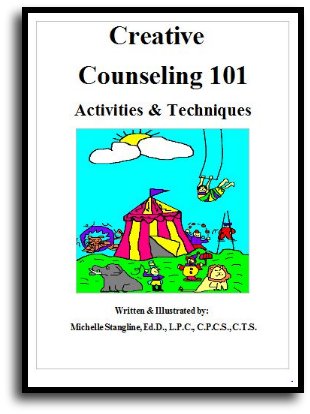
Step By Step Therapy:
Learn how to be a more Creative Therapist with the Book that started it all!
- Graduate School Counseling book used by hundreds of graduate counseling students!
- Includes full color reproducible worksheets with most activities.
- Winner of the Counselor Writer of the Year Award, 2011, Georgia Regional Award
Download Your Copy Today Only $39.95:
See Creative Counseling 101 eBook Information Here:
Get the Set
of all four
eBooks for only $98.95:
An incredible collection of how to do therapy eBooks!
A $159.80 Value,
You Save Over $60!
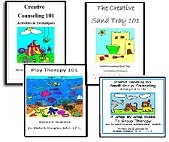
Get your complete set of the Creative Counseling 101.com eBooks by Dr. Michelle Stangline for only $98.95, that's less than $25.00 per eBook (Regular Price is $39.95 for each eBook.).
Your complete set includes:
- Creative Counseling 101
- Creative Group Counseling 101
- Creative Play Therapy 101
- Creative Sand Tray 101
For more information click the link below:
See Complete Set of eBooks For Sale Here:
New!!! "Beyond Art Therapy" 101 eBook
Over 300 pages of Beyond Art Therapy activities and techniques. Learn what I teach graduate counseling students!
See the link below for more information.
Only $39.95
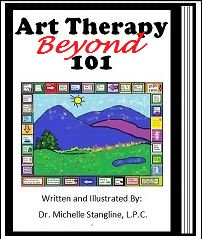
See More Invividual eBooks For Sale:
Sand Tray Therapy 101 eBook:
Learn how to do Sand Tray Therapy or enhance your skills.
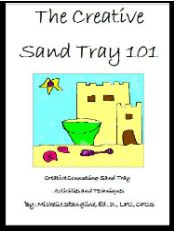
Play Therapy 101 eBook
Learn how to do play therapy or enhance your skills.
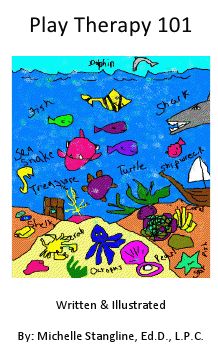
Small Group Counseling eBook For Sale:
Learn how to do creative group therapy and enhance your skills.
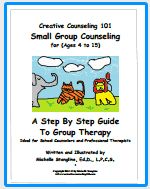
School Counselor Guidance Lesson & Social Stories eBook for sale:
Get a year's worth of school counselor guidance lessons with "Creative Warm & Fuzzy Classroom Guidance Lessons eBook". Introduce your students to the "Warm & Fuzzy Way". Click the link below for more information:
Warm & Fuzzy School Counselor Guidance Lessons eBook
